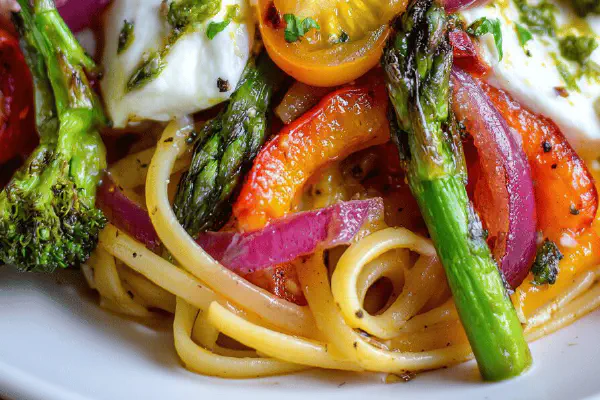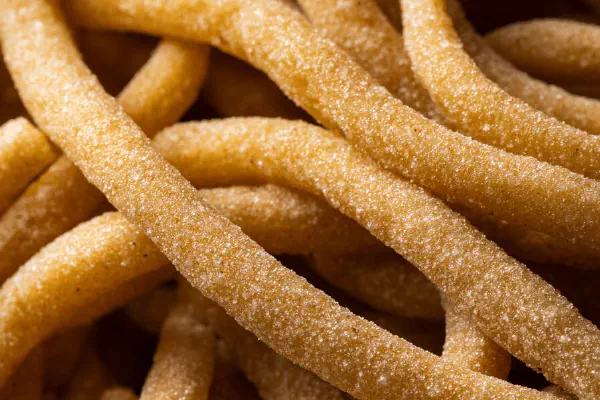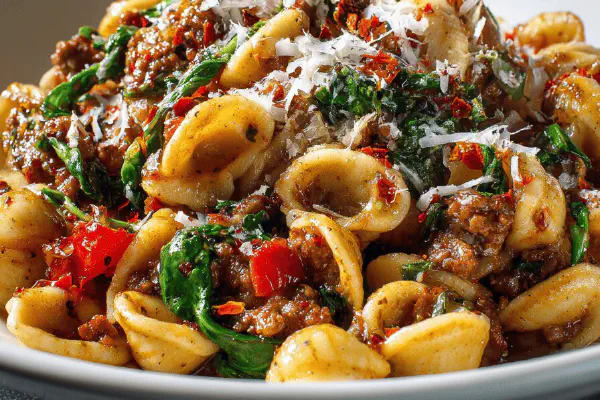Fresh Egg Pasta Dough

By Emma
Certified Culinary Professional
Ingredients
- 4 egg yolks
- 3 whole eggs
- 20 ml olive oil
- 420 g all-purpose flour unbleached
- 70 g fine semolina flour
- 5 ml fine sea salt
About the ingredients
Method
- Whisk yolks and eggs with oil in a medium bowl until glossy. Oil lubricates dough, slows gluten forming too tight.
- In food processor, pulse together flours and salt. Combine dry evenly for consistent dough texture.
- Pour egg mixture into dry ingredients. Pulse 40 seconds. Dough clumps but still crumbly—don't expect a neat ball here.
- If dough balls too sticky and wet, add flour by 15 ml spoonfuls. Feel with fingers—should break apart easily, tacky but not gooey.
- If dry and cracked, add room temp water, 10-15 ml at a time, watch how it clumps together.
- Dump rough dough on lightly floured surface. Push pieces together, start folding and kneading with the heel of hand.
- Knead about 70 seconds max. Dough turns smoother, less grainy. Silky sheen, pliable but not sticky is key.
- Wrap dough tightly in plastic wrap, press to flatten slightly—this cuts resting time.
- Let rest at room temp 25-35 minutes. Gluten relaxes; dough softens to handle without tearing when rolled thin.
- After resting, cut dough into portions for rolling or shaping. Use immediately or refrigerate wrapped for up to 24 hours.
- For a twist, substitute olive oil with toasted walnut oil—adds delicate woody aroma.
- If no food processor, mix flours and salt in bowl, make well, whisk eggs and oil then slowly incorporate flour with fork before kneading.
Cooking tips
Chef's notes
- 💡 Start mixing yolks with whole eggs and olive oil first. It emulsifies fat better. Avoid adding flour directly before wet mix–flour can clump unevenly. Oil slows gluten tightening; skip oil, dough tears under rolling pressure.
- 💡 Use a food processor to pulse flours and salt dry, helps even distribution. Pulsing egg mix into flour for 40 seconds breaks lumps but expect crumbly texture first. Don’t try for neat ball now, rough clumps are normal.
- 💡 Sticky dough? Add flour in small 15 ml spoonfuls. Feel with fingers–dough should pull apart, tacky not gooey. Avoid dumping too much flour, dough stiffens quickly. If dry cracks appear, introduce room temp water very slowly, 10-15 ml increments.
- 💡 Kneading is tactile only. Rough dough pressed and folded on lightly floured surface. Use heel of hand about 70 seconds max. Stop when dough is pliable, satin sheen visible, smooth but not sticky. Over kneading toughens dough, under kneading leaves grainy texture.
- 💡 Rest dough tightly wrapped, pressed flat in plastic wrap. Rest length 25-35 minutes opens gluten, relaxes dough for easy rolling. Less rest means resistance, more than an hour might make dough gummy. Keep covered to avoid drying, flour hands not dough when handling afterward.
Common questions
Why use olive oil in dough?
Oil slows gluten forming too tight. Makes dough pliable, easier to roll. Skip it and dough resists stretch. Alternative oils like walnut add aroma but change flavor profile.
How to fix sticky dough?
Add flour incrementally, small spoonfuls. Feel dough, should not be gooey just tacky. Sticky means too much moisture or insufficient kneading. Air humidity affects moisture balance.
What if dough cracks when rolling?
Usually too dry, add teaspoons of water gradually. Over-floured surface or insufficient rest tightens dough. Rest longer, cover well, don’t rush rolling phase. Sometimes semolina flour helps hold shape better.
How to store dough if not using immediately?
Wrap well in plastic, refrigerate up to 24 hours. Let sit at room temp before rolling. Dough gets firmer cold, needs gentle warming. Avoid drying by flouring hands, not dough during handling.



